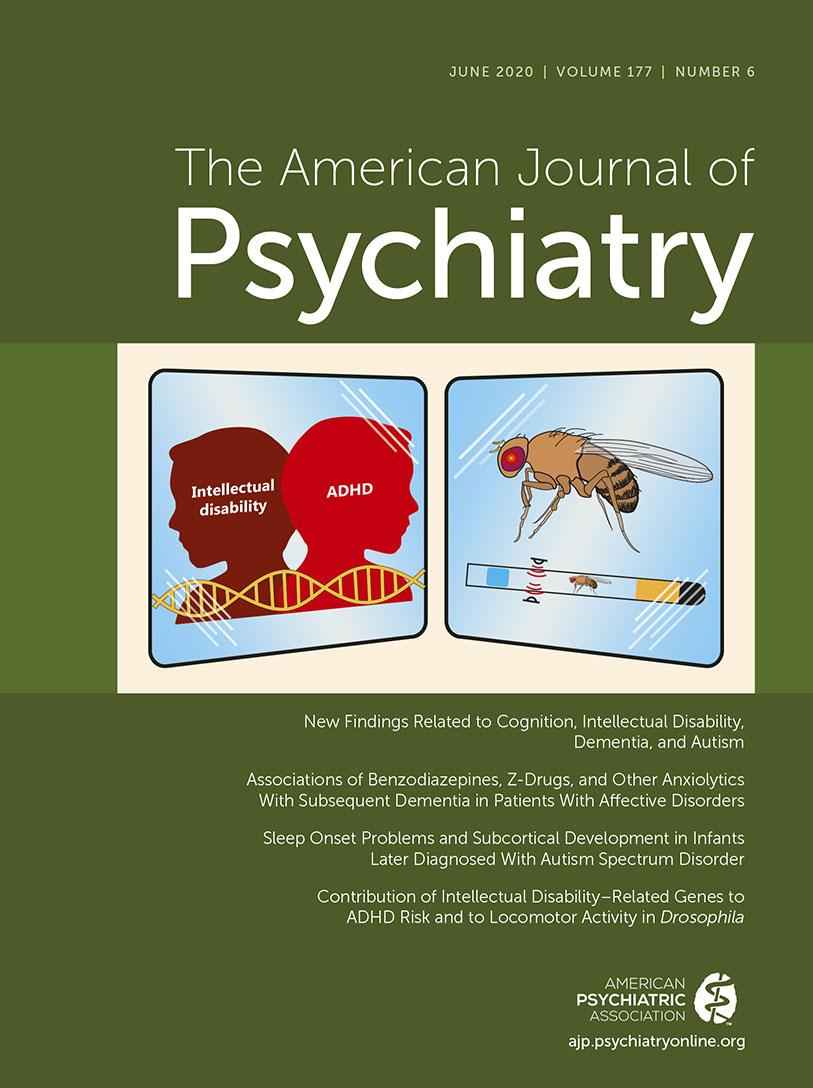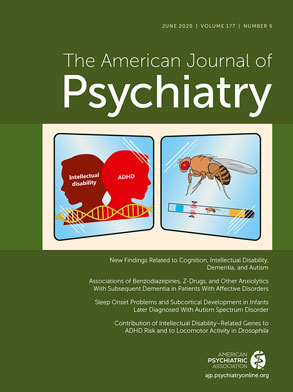A gradual decline of cognitive function and concurrent loss of brain volume is an expected process even in healthy aging (
1,
2). What if, however, this process could be delayed, reversed, or even prevented? This question has become increasingly relevant as the average expected lifespan rises. Indeed, the number of Americans over age 65 is expected to more than double from 40 million in 2010 to 89 million in 2050 (
3).
One method being actively researched for preserving cognitive function in aging is cognitive training. Briefly, this approach leverages three decades of progress in cognitive neuroscience, where functional MRI (fMRI) and other methods have mapped out the discrete neural circuits engaged during specific cognitive processes that are elicited by well-established experimental cognitive tasks. Most forms of cognitive training for late-life cognitive decline involve repeated engagement of the neuronal processes and circuitry associated with those cognitive functions that are frequently at risk for decline (or compensatory for other circuits or cognitive functions). Practically, this training involves performing repetitive tasks involving processing speed, working and long-term memory, attention, and executive function (among other domains), with training difficulty adaptively scaled with performance. Although studies suggest that training is beneficial (e.g., the Advanced Cognitive Training for Independent and Vital Elderly [ACTIVE] study [
4]), effect sizes are typically small and have not produced broadly generalizable improvements with functional impacts.
In this issue of the
Journal, Lenze and colleagues (
5) examine the ability of the antidepressant vortioxetine to augment the cognitive effects of cognitive training in adults age 65 or older. Vortioxetine is a relatively new antidepressant with a unique pharmacological profile in that unlike most selective serotonin reuptake inhibitors (SSRIs), vortioxetine is also an antagonist of 5-HT
3 and 5-HT
7 receptors (
6). This antagonistic effect may then indirectly increase activity of other neurotransmitter systems, such as dopamine, acetylcholine, and histamine (
6), leading to potentially procognitive effects. In support of this hypothesis, previous work has shown that vortioxetine improves neurocognition in major depressive disorder in both younger and older populations (
7,
8). Based on these earlier findings, Lenze et al. hypothesized that combining the drug with cognitive training would amplify the procognitive effects of training as well as show benefits on everyday cognitive tasks (“real-world” behavior).
To that end, in a randomized clinical trial, Lenze et al. examined the effects of vortioxetine (compared with placebo, in a parallel design) in combination with 26 weeks of cognitive training on cognition (using the NIH Toolbox) as well as “functional” cognition (using the UCSD Performance-Based Skills Assessment) in 100 adults (51 female, 49 male) age 65 or older (average age, 72 years). All participants self-reported cognitive decline before enrollment.
Participants were randomly assigned to receive either placebo or drug (10 mg of vortioxetine) in one daily tablet. Both groups received adaptive cognitive training using the software program Scientific Brain Training Pro (
www.scientificbraintrainingpro.com). The drug was well tolerated. The overall number of adverse events did not significantly differ between the drug and placebo groups, and the only type of adverse event that was significantly greater in the drug group was nausea (affecting 29% of participants). No one in the drug group withdrew because of adverse events. Outcome measures were evaluated after 4, 12, and 26 weeks of training.
The most exciting result of the study was the effect of the antidepressant on cognition. Specifically, global fluid cognition improved, with an effect size (Cohen’s d) of 0.57 at the 12-week assessment in the vortioxetine group compared with the placebo group. The effect was driven most strongly by improvement on dimensional card sorting, an executive function task. Vortioxetine’s effects were not due to differences in training adherence, as no significant difference was observed in time spent training. A second important finding was that training improved functional cognition (“real-world” behavior) over the 26-week period, although vortioxetine did not enhance this effect compared with placebo. The results of the study suggest that vortioxetine may have a synergistic or additive effect when combined with cognitive training to improve cognitive performance in older adults who are experiencing nonpathological age-related cognitive decline. The study represents the first demonstration that a drug may enhance and accelerate the effects of cognitive training in this population.
As noted by the authors, the study had several limitations. No effects of drug were observed on functional cognition, potentially limiting the real-world impact of the approach used the study. The study was also unable to discern whether vortioxetine’s effects were additive or interactive, as no drug-only or placebo-only groups were included. Additionally, the study was relatively brief (26 weeks) for the target population. As age-related cognitive decline occurs over years-long periods, longer trials are needed to determine how long older adults may see benefits of combined vortioxetine and cognitive training and over what age ranges benefits may occur. The finding that the performance of the placebo plus training group approached that of the vortioxetine plus training group at 26 weeks also hints that although vortioxetine may accelerate the effects of training, ultimately training alone may be sufficient to show cognitive benefits in age-related decline. A longer trial is needed to examine this possibility.
Repurposing SSRIs to slow or even prevent aging-associated cognitive decline is an exciting idea. Depression is a risk factor for mild cognitive impairment, Alzheimer’s disease, progression from mild cognitive impairment to Alzheimer’s disease, and cognitive decline in healthy elderly persons (
9,
10). Furthermore, a recent study by Bartels et al. (
11) found that long-term SSRI treatment (>4 years) delayed progression to Alzheimer’s disease by 3 years in patients with mild cognitive impairment. Future studies may therefore seek to examine whether SSRIs act in concert with cognitive training to enhance this effect.
By what neuronal mechanisms might vortioxetine act in concert with cognitive training to enhance cognition? In the only vortioxetine fMRI study to date in humans, Smith et al. (
12) found that 14 days of treatment with 20 mg/day of vortioxetine reduced dorsolateral prefrontal, hippocampal, and temporoparietal activation during a working memory task in both healthy subjects and patients with remitted depression (average age, ∼35 years) without changing performance, suggesting that the drug increased efficiency (i.e., neuronal resources needed to perform the task), possibly by reducing activation in task-unrelated networks (e.g., the default mode network). As prefrontal hyperactivity is frequently seen during working memory in depression (
13–
16), reduced prefrontal activation following treatment is consistent with a “normalizing” effect of drug. Given these findings in depression, one may hypothesize similar neuronal effects of vortioxetine in cognitive aging. Performing such a study is essential to establish biomarkers for vortioxetine’s putative procognitive effects for target validation. The fact that the Lenze et al. study found the strongest drug effects during an executive function task further suggests that the drug may affect prefrontal circuits. Given that previous work has demonstrated effects of cognitive training on prefrontal activity (
17,
18), it is possible that the prefrontal cortex is a common target for both interventions. Indeed, vortioxetine may work synergistically with cognitive training via serotonin receptor–mediated enhancement of brain-derived neurotrophic factor signaling (
19) and associated neurogenesis and synaptic plasticity (
20).
If prefrontal cortex activity is a target common to both vortioxetine and cognitive training, might the procognitive effects of these agents be further enhanced by focal modulation of the region using transcranial direct current stimulation (tDCS)? In part because of its safety, ease of administration, and noninvasiveness, tDCS modulation of the frontal cortex has been and continues to be investigated as a cognitive enhancer in various geriatric populations (
21–
23). Combined effects of tDCS and training have also been recently reported. For example, a 2017 study by Ruf et al. (
24) showed accelerated working memory enhancement with training in schizophrenia when combined with prefrontal tDCS (compared with sham stimulation). Manenti et al. (
25) found enhanced verbal fluency in Parkinson’s disease after combined dorsolateral prefrontal tDCS plus training (compared with sham stimulation plus training). Das et al. (
26) observed increased resting frontal cerebral blood flow after combined inferior frontal gyrus tDCS plus training (compared with sham stimulation plus training), although tDCS occluded the effects of training on cognitive enhancement.
Overall, the Lenze et al. study points to some exciting new research avenues for investigation into methods and mechanisms for ameliorating late-life cognitive decline. The reported findings will require replication and extension in larger samples in studies that include longer treatment and follow-up periods. Studies combining training with pharmacological augmentation and other forms of noninvasive neuromodulation should also be pursued. The effects of combinatorial approaches for cognitive enhancement in geriatric and other populations are only beginning to be understood, and we expect these studies to continue to bear fruit as the field matures.

